×
SparkFun will be closed on Tuesday, December 24th, and Wednesday, December 25th, in observance of the Christmas holiday. Any orders qualifying for same day shipping placed after 2:00 p.m. (MST) on Monday, December 23rd, will be processed on Thursday, December 26th, when we return to regular business hours. Wishing you a safe and happy holiday from all of us at SparkFun!
Please note - we will not be available for Local Pick up orders from December 24th-December 27th. If you place an order for Local Pick-Up we will have those ready on Monday, December 30th.
How's it going, everyone? Welcome to another new product-filled Friday post! This week, as we are sure you can tell from the post name, we have three new Qwiic boards graduating from SparkX prototypes to full-fledged SparkFun breakout boards: an IMU utilizing the BNO080 IC, the Grid-EYE IR Array sensor, and a tri-axial MLX90393 magnetometer board! That's not all, though! We also have four different colors of 5mm LEDs with built-in resistors for you as well!
Additionally, in celebration of May the Fourth be With You, we have having a big sale on all of our Thank the Maker Tees to make room for our next limited-edition SparkFun shirt. Supplies are running low, and once stock runs out we won't be ordering any more! Make sure to get yours today!
Alright folks, let's jump in and take a closer look at everything we have!
Virtual becomes Reality with the SparkFun VR IMU Breakout!
Virtual Reality is in, but you shouldn't have to drop hundreds of dollars to gain access to the technology behind it. Luckily, that's where the SparkFun VR IMU Breakout comes in. At its heart is Bosch’s BNO080, a combination triple axis accelerometer/gyro/magnetometer SiP, packaged with a 32-bit ARM Cortex M0+. The BNO080 Inertial Measurement Unit (IMU) produces accurate rotation vector headings, excellently suited for VR and other heading applications with a static rotation error of two degrees or less. The VR IMU is exactly what we’ve been waiting for: All the sensor data is combined and drift-corrected into meaningful, accurate IMU information. It’s perfect for any project that needs to sense orientation or motion. This IMU breakout board has also been equipped with two I2C Qwiic connectors to make interfacing with the tiny, QFN package a bit easier. It’s part of SparkFun’s Qwiic connect system, so you won’t have to do any soldering to figure out how things are oriented. However, we still have broken out 0.1"-spaced pins in case you prefer to use a breadboard.
Qwiic VR IMU (BNO080) Hookup Guide
April 30, 2018
Figure out how things are oriented with the robust 9 degrees of freedom (DOF) BNO080 IMU. Maybe even make your own virtual reality (VR) applications if you're feeling savvy.
EYE spy with my little Grid-EYE
Get ready to see like the Predator! The SparkFun Grid-EYE Infrared Array Breakout board is an 8x8 thermopile array, meaning you have a square array of 64 pixels, each capable of independent temperature detection. It’s like having a thermal camera, just in a lower resolution.
The on-board AMG8833 Grid-EYE possesses an accuracy rate of ±2.5°C (±4.5°F), with a temperature range of 0°C to 80°C (32°F to 176°F). Additionally, this IR "camera" board can detect human body heat at about 7 meters or less (that's about 23 feet), and has a frame rate of 10 frames a second to one frame a second.
Qwiic GRID-Eye Infrared Array (AMG88xx) Hookup Guide
May 3, 2018
The Panasonic GRID-Eye (AMG88xx) 8x8 thermopile array serves as a functional low-resolution infrared camera. This means you have a square array of 64 pixels each capable of independent temperature detection. It’s like having thermal camera (or Predator’s vision), just in really low resolution.
I guess you could say that we were attracted to this board...
It's time to start utilizing the superior magnetometer, and what better way than to throw it onto an easy-to-use breakout board? The SparkFun MLX90393 Magnetometer Breakout is a triple-axis magnetic sensor board capable of sensing very small fields (like the Earth’s magnetic field), while still behaving as one would expect during saturation in larger fields (like a nearby magnet). The MLX90393 breakout can be used as a compass sensor, but also works well as a non-contact controller, a flow meter with a magnetic impeller, or a linear actuator position sensor.
Qwiic Magnetometer (MLX90393) Hookup Guide
May 3, 2018
Figure out how magnetic fields are oriented, all without having to solder a thing.
Last up on this fine Friday we have four different LEDs for you. You don't have to worry about adding a resistor to an LED if you get an LED with a built-in resistor! These packs of 25 red, yellow, blue, or green 5mm LEDs will help keep you from burning them out, since there is a resistor in the diode itself. Each LED should really help make your next project shine!
Alright folks, that's it for this week. Please make sure to stop by next week, you'll definitely want to take a bite out of the new products we have in store for you! As always, we can't wait to see what you make with these products! Shoot us a tweet @sparkfun, or let us know on Instagram or Facebook. We’d love to see what projects you’ve made!
Thanks for stopping by. We'll be back next week with even more fantastic new products!
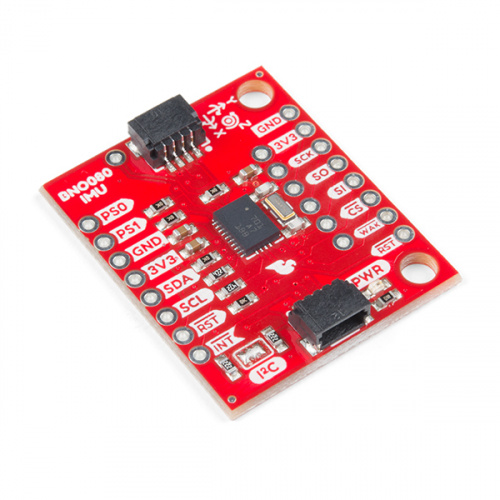
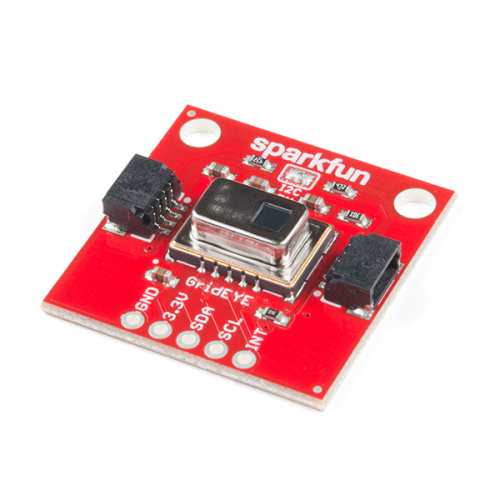
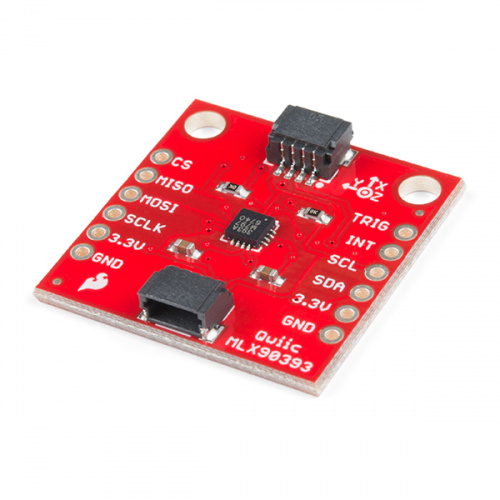

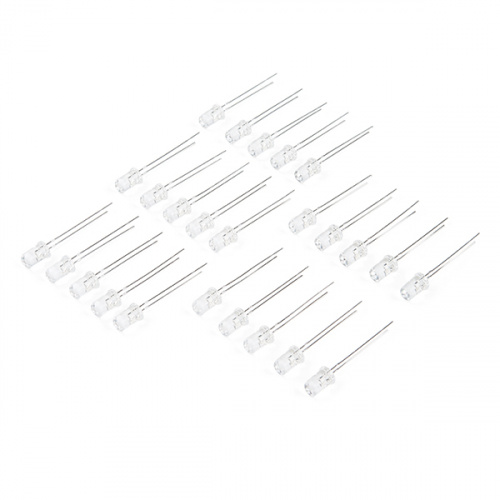
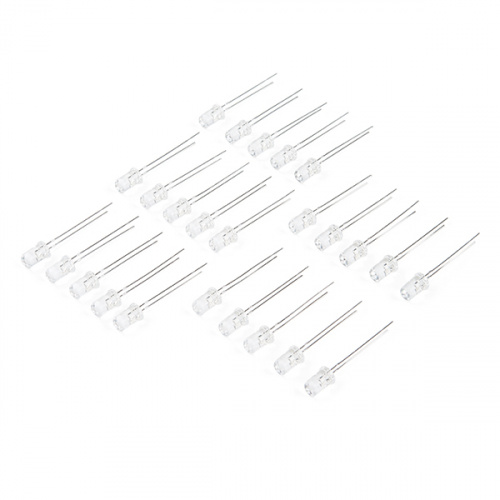


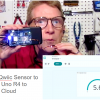






The GRID-Eye has an amazing price, but 8x8 seems constricting for a lot of applications. While something like the FLiR Lepton is beyond my budget (for now), I'd love to see a breakout board for this component. It appears to be a happy compromise in resolution and price point, though its a little difficult at the moment for a hobbyist such as myself to acquire. I'm sure a popular distributor like Sparkfun could get some ;D
So, I currently use the BNO055 as an IMU for robotics (and it works quite well, other than the compass, which is lacking). How is the BNO080 different? Does it have an improved sensor, or does it just have better firmware for VR applications and such? If this sensor is similar, I'm very excited that I can get it from SparkFun in the Qwiic format (which is awesome)!
Oh Thank you
The datasheets on the LEDs are Chinese to me... ("if you can't say anything nice, say it in Yiddish" -- unfortunately I speak neither Chinese nor Yiddish...)
Maybe lean on the U.S. rep for "CHINA YUNSUN LED LIGHTING CO., LTD." to provide one translated into English? (Seems to me that they'd want to do that as English has become the de facto "lingua Franca" of engineering... it would likely improve global sales.)
Regarding the "heavy math" to deal with, say, an accellerometer, a couple of years ago I did a project that needed to compare the positions for two accellerometers and calculate the angle between them (fortunately in just one plane). After much consideration, it finally dawned on me that the arctangent function (ATAN()) did not require that the inputs be "normalized" (that is, that the "vector" created by the X & Y axis values be of length 1.0), and so eliminated a LOT of the "heavy math" (squaring the inputs then taking the squareroot of the sum), and as an "added bonus", it turns out that ATAN() is the least intensive trig function for the CPU to calculate. I had no problems with a MicroView keeping up with it. (Be aware that you do have to look at the signs of the input X & Y values to determine which quadrant, and do a little simple math to get the angle indicated by ATAN() into the correct quadraant, but that's fairly simple math.)
ATAN2() is available in many programming languages and will do that last step for you.
Really, clear LEDs pictured on a white background? Stealth mode enabled!
There's a picture in there of the LED powered on each of the product pages:
The datasheet says something about 5V for the forward voltage. Testing it out @ 5V, it pulls about 18mA. It has been working fine at 9V and pulls about 30mA. This is probably at the higher end of the input voltage. (PS: Any higher, I'd be worried. At about 16V, the LED blew out under our stress tests).
I was wondering about the 9V battery when the max operating range is listed as 5V. I am very appreciative when Sparkfun does in-house testing of their product and publishes results.